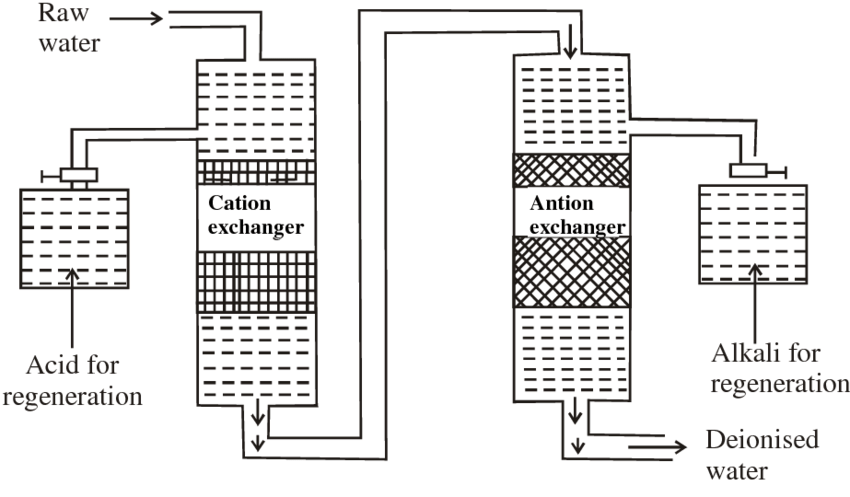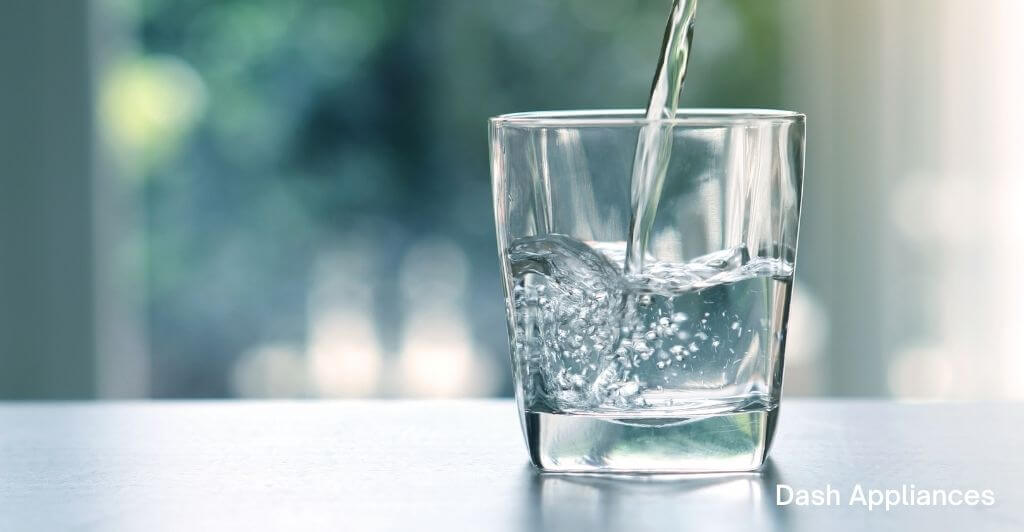A metal that originates naturally in animals, plants, rocks, water, and soil, copper can is flexible and can be molded & shaped easily.
An appropriate amount of copper is required by human beings and all the other living organisms to survive, making it essential. However, the consumption of copper in excessive quantities can affect your health.
In this post, we’ll discuss the properties of copper in detail, and we’ll take you through the various ways in which you can remove copper from drinking water.
What is Copper and Why Is It In My Water?
Copper is a reddish-orange element that is used to make building & electrical components. Copper is also an important mineral that needs to be consumed by living organisms.
This element makes its way into our drinking water through the copper pipes that the water passes through and natural deposits.

When in water, copper cannot be seen, touched, or smelled. It doesn’t even have a taste. Hence, the only way to know whether your drinking water contains copper or not is by getting your water tested from a renowned & certified laboratory.
In case your water appears to be rusty-colored, or you often find stains on your dishware and linens, then this can also be a sign that your house consists of copper pipes that have been corroded.
How to Remove Copper From Drinking Water?
When consumed in limited quantities, copper can provide several health benefits to our body as it helps our body stay away from some syndromes and diseases. On the other hand, if higher amounts of copper go inside the human body, it can cause liver and kidney problems, headaches, stomach cramps, vomiting, and other health issues.
Consumption of high concentrations of copper can be specifically harmful to infants. If you wish to get rid of copper in your drinking water, there are various ways to do so. These methods include ion exchange filtering, distillation, and reverse osmosis.
In this section, we shall discuss each one of these methods in detail.
1. Distillation
Distillation is a process wherein dissolved solids are eliminated from your water. You can easily find compact distillation systems to install in your kitchen.

Distillation can prove to be a rather expensive process as the distillation systems boil the water during the process. Moreover, it is not efficient as it can only produce a very small amount of water throughout the day.
2. Reverse Osmosis
Reverse osmosis is a method wherein the water is forced to pass through a membrane. When the water flows through this membrane, it doesn’t let any ions pass through it, hence, allowing you to consume clean water.

Reverse osmosis filters can also be easily found in the market in compact shapes & sizes. You can get a reverse osmosis system fitted near your kitchen sink.
Reverse osmosis systems are not only effective, but they’re also light on your pocket and can easily produce more than 100 gallons of water every day.
3. Ion Exchange Filtration
The ion exchange filtration process uses resins to absorb the copper present in your water. This process is held in the filter cartridges. To ensure that these filters work effectively at all times, you need to replace them every now & then.

Note: Boiling your drinking water or simply heating it will do nothing to eliminate copper. When you boil the water, some of it gets evaporated, and it leaves concentrated water behind.
Moreover, bleach disinfection does nothing to remove copper from water too. It would be best if you only stuck to the methods mentioned above of removing copper from water as they are highly effective.
What is the Safe levels of copper in drinking water
The Environmental Protection Agency has set various limits for the concentration of such contaminants in public drinking water. These limits have been set under the Safe Drinking Water Act.
When it comes to copper, a maximum of 1.3mg copper is allowed to be present in 1 liter of water. This is to make sure that we don’t suffer from any gastrointestinal tract issues.
This limit has been set by EPA because too much copper can lead to various health issues, and if you consume too much copper, it can cause diarrhea, vomiting, and headaches in the short term.
Long-term health problems due to excessive doses of copper including copper poisoning, anemia, and liver & kidney damage. People having Wilson’s disease & infants are comparatively more sensitive to copper.
What are the Health Effects of Copper Exposure?
Copper is known to be an essential mineral that is required for our survival. However, excessive consumption of copper in any form can lead to problems such as kidney diseases, nausea, liver damage, cramps, diarrhea, and vomiting.
Infants are also highly sensitive when it comes to copper as their bodies are incapable of eliminating excessive amounts of copper with ease.
Normally, our bodies require 2-3mg of copper in a day. Over 90% of copper’s requirement in our body is fulfilled by the food that we consume. Excessive consumption of copper can also lead to severe headaches. If you continue to consume copper in excessive amounts, then it can also lead to death in the long term.
Does Brita remove copper from water?
Brita has a variety of quality water filters that perform the job of getting rid of harmful particles and chemicals from your drinking water. The water filters by Brita have also proved to be highly efficient, and they eliminate copper from your water effectively.
If you’re looking for a good water filter, you should definitely invest in Brita, as their water filters will never let you down.
Conclusion
To summarize, copper occurs naturally, and it is a metal used to make several products available to us in the market. These products include plumbing instruments and electrical wires. Copper can make its way into your drinking water when the water flows through the plumbing systems.
One needs to note that although a certain amount of copper is good for our health, consumption of copper in excess can harm our health. You can get rid of copper using Reverse Osmosis, Distillation, and many other effective processes.
Frequently Asked Questions (FAQs)
How do you remove copper from water?
Reverse Osmosis, Ion exchange filtering, and Distillation are some processes that you can use to get rid of copper. Moreover, several good-quality water filters out there filter copper along with other impurities and harmful components present in your water.
What happens if you drink water with copper in it?
The human body requires some amount of copper to stay fit, but like everything, excessive copper can be harmful to your body. Consuming too much copper in any form can lead to kidney diseases, liver damage, nausea, stomach cramps, diarrhea, and vomiting.
